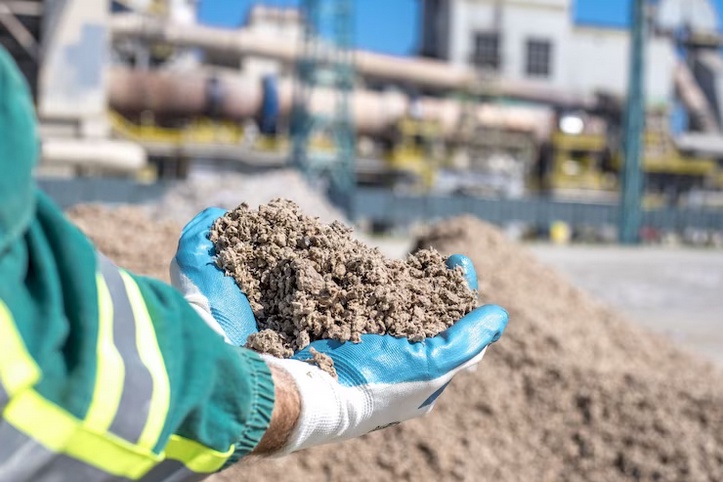Introduction:
In the realm of construction, achieving perfection goes beyond the initial pour of concrete. The often-overlooked yet crucial element in creating a flawless finish is the concrete screed mix. This comprehensive guide explores the intricacies of concrete screed mixtures, shedding light on their composition, applications, and the meticulous process of achieving perfection in construction projects.
Understanding Concrete Screed Mix:
-
Composition: Concrete screed mix is a blend of cement, sand, and water, with optional additives for specific enhancements. The proportion of each component is meticulously calibrated to achieve the desired consistency and durability. The composition may vary based on the type of screed—traditional sand and cement screed, fiber-reinforced screed, or self-leveling screed.
-
Sand Selection: The choice of sand is critical in determining the texture and strength of the screed mix. Different types of sand, such as sharp sand or fine sand, impact the overall finish and workability of the screed. The regional availability of sand may also influence the selection process.
-
Cement Content: The cement content in the mix serves as the binding agent, holding the screed together. The type of cement used, whether ordinary Portland cement or a specialized blend, can affect the drying time and strength of the screed.
-
Water and Additives: Water is added to the mix to initiate the chemical reaction that causes the cement to set. Additives, such as plasticizers or accelerators, may be incorporated to enhance workability, reduce drying time, or improve the screed's resistance to cracking.
Achieving Perfection in Concrete Screed Mixtures:
-
Proportioning and Mixing: Achieving perfection in concrete screed mixtures starts with meticulous proportioning and mixing. The correct ratio of cement to sand to water is essential for consistency and strength. Modern construction practices often utilize batching plants to ensure precision in mixing.
-
Surface Preparation: Before the screed mix is applied, the surface must be prepared meticulously. This involves cleaning, leveling, and, if necessary, applying a bonding agent to promote adhesion. Proper surface preparation is a key factor in achieving a flawless finish.
-
Application Techniques: The application of concrete screed mix requires skill and precision. Traditional screed may be applied manually and leveled using tools such as straightedges or floats. Self-leveling screed, on the other hand, is poured and distributes itself evenly across the surface.
-
Curing Process: Achieving perfection extends to the curing process. Adequate curing time allows the screed mix to gain strength and durability. Proper curing methods, such as covering the surface with wet burlap or applying curing compounds, contribute to the longevity of the screed.
Applications of Concrete Screed Mix:
-
Floor Finishes: Concrete screed mix is widely used as a floor finish, providing a smooth and level surface for various applications. Its versatility allows it to be applied in residential, commercial, and industrial settings, creating a durable and aesthetically pleasing flooring solution.
-
Underfloor Heating Systems: The thermal conductivity of concrete screed makes it an ideal choice for use with underfloor heating systems. The screed efficiently conducts and retains heat, contributing to energy-efficient heating solutions in buildings.
-
Resurfacing and Repairs: Concrete screed mix is often employed in resurfacing existing concrete surfaces or repairing damaged areas. Its ability to bond well with existing concrete and create a uniform surface makes it a valuable tool in renovation and maintenance projects.
Benefits of Concrete Screed Mixtures:
-
Smooth and Level Finish: The primary benefit of concrete screed mixtures is the ability to achieve a smooth and level finish. This is particularly important in flooring applications where an even surface is essential for the installation of various floor coverings.
-
Durable and Long-Lasting: Properly mixed and applied concrete screed is durable and long-lasting. It can withstand heavy foot traffic, impact, and abrasion, making it an ideal choice for high-traffic areas in both residential and commercial spaces.
-
Versatility in Applications: Concrete screed mixtures offer versatility in applications, adapting to different construction needs. Whether used for flooring, underfloor heating systems, or repairs, the flexibility of screed makes it a valuable material in construction projects.
-
Thermal Efficiency: In applications involving underfloor heating, the thermal efficiency of concrete screed contributes to energy savings. The screed efficiently conducts and retains heat, promoting an even distribution of warmth in the built environment.
Conclusion:
In conclusion, concrete screed mixtures are the unsung heroes of construction, providing the foundation for flawless finishes in various applications. The meticulous composition, precise application techniques, and the careful curing process all contribute to achieving perfection in concrete screed.
The versatility of concrete screed mixtures, from creating smooth floor finishes to facilitating underfloor heating systems, underscores their importance in modern construction practices. As the construction industry continues to evolve, the role of concrete screed mixtures in achieving perfection will remain paramount, shaping the way we approach the aesthetics, durability, and functionality of built spaces.


No comments yet